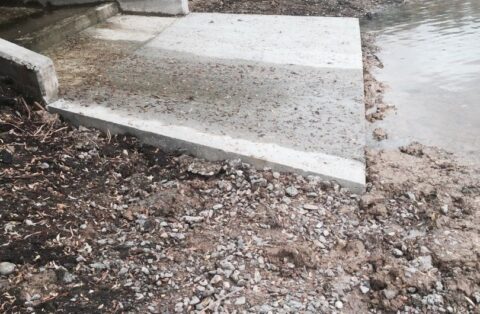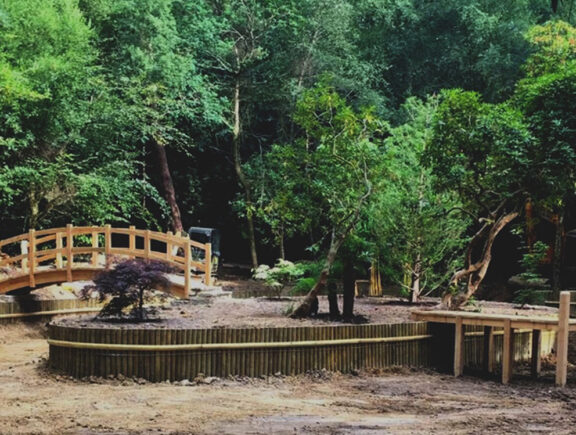Works included:
Remove existing signs from the bridge and set aside for reinstalling at the end of the works. Then all of the upper side of the bridge was prepped which included the handrail and flooring. For this the existing paint was hand prepared with wire brushes and mechanical sanders to remove all loose existing paint. We tied a tarpaulin to the underside of the bridge to catch all debris.
We followed with the installation of the pontoons underneath the bridge with a handrail both sides and were secured either side to the bridge to stop them moving. The tarpaulin was placed on the pontoons to catch the debris from removing the existing coating on the underside of the bridge.
Following preparation works, a protective paint was applied using 2 coats by brush and roller to all parts of the bridge which was colour matched to the bridge.
This impounding reservoir also had 4 spillways and 3 of which were showing various levels of water damage where the ends of the spillways had broken up over time and needed recasting.
The client ensured that water levels were lowered to allow access of the excavator and dumper within the reservoir to access the ends of the spillways. A hydraulic breaker was used on the excavator to break out the old concrete on the damaged spillways. This was then excavated out, loaded into the dumper and taken to the site compound where it was temporarily stored on polythene sheeting. Following the excavation of all 3 spillways, we then loaded the excavation material into skips which was removed from site.
One by one the form work was set up, following the existing profiles of the spillways. A type 1 fill material was used a sub-base material. The reinforcing mesh was cut and placed into the area to be concreted. Once all 3 were set up ready to form, ready mixed concrete was delivered to site and tipped onto polythene in the site compound and transferred to the spillway location by dumper one spillway at a time.
The concrete was carefully tipped into the shutter into the formwork, vibrated, levelled and tamped to finish the concrete. Once the concrete was cured, the form work was removed and the ground was backfilled around the new concrete and any tracks that the machine and dumper had made during the construction process were made good and the site was handed back to the client.











